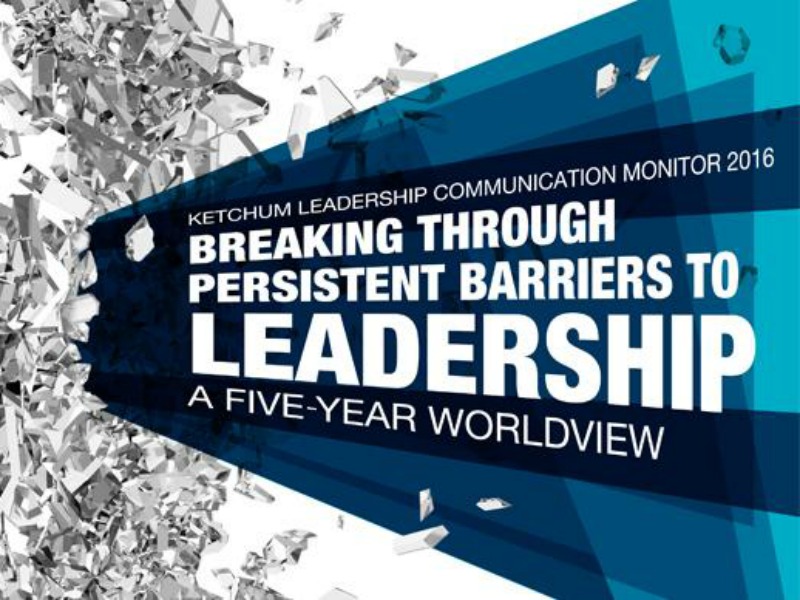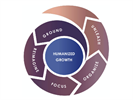Holmes Report 10 Jul 2016 // 5:27PM GMT

Barriers blocking equal access to leadership opportunities remain stubbornly in place when it comes to race, gender, disability and sexual orientation, according to the new 10-country Ketchum Leadership Communication Monitor. Moreover, political leaders are seen by survey respondents to be part of the problem rather than the solution.
Now in its fifth year, the Ketchum Leadership Communication Monitor examines leadership and communication across leaders spanning business, political, community, non-profit and union/labor organizations. This year’s study shows that, when asked to consider five potential barriers to equal opportunities in achieving leadership positions, a majority of people worldwide believe those barriers persist in every area except religious beliefs—and close to half see that as a barrier.
According to Rod Cartwright, partner and director of Ketchum’s global corporate and public affairs practice, said, “Five years of global research have starkly highlighted the low-trust, high-expectation gap that exists for leaders, resulting in a significant negative impact on the bottom-line. This year’s results show unambiguously that business leaders have a huge opportunity to improve confidence levels by breaking through the multiple diversity barriers that still exist to equal leadership opportunity.”
Despite all the social progress of recent decades, not one country saw a majority believing in equality across all five areas, with respondents in Brazil, Japan and Spain feeling particularly strongly about the inequality of leadership opportunity in their country.
And when asked to choose the most effective means of shattering the leadership glass ceiling, “actions by companies and other employers” and “individual responsibility from every citizen for their own future” left “new laws and legislation” in the dust.
The 2016 =Monitor study also shines a stark new light on the extent of the global crisis of political leadership, while identifying key causes and provides a clear five-step roadmap to restoring confidence in politicians, based on lessons from business leaders. Nearly two-thirds (61 percent) of consumers globally believe their political leaders have fallen short of expectation in the past year, with a miniscule 7 percent saying those leaders take appropriate responsibility when they do fall short.
As a result, only one in five respondents (22 percent) said politicians lead effectively, with just 12 percent saying they anticipate an improvement over the coming year and more than half (51 percent) saying they expect performance to get even worse. And, over five years, political leaders have come last every year on how effectively they communicate, with an average 45-point gap between political and business leaders on meeting public expectations.
Says Rob Flaherty, Ketchum CEO and president, said, “It is remarkable to find that in the second decade of the 21st century, such stubborn obstacles to equality of leadership opportunity remain so firmly in place. And that at a time when world-class political leadership has never been more crucial, people look to companies and citizens themselves to combat these barriers, rather than to those they elect to drive social change.”
The research suggests a five-step roadmap for restoring confidence in political leaders:
- Close the gap between expectation and delivery on the issues people deem having the greatest importance – corruption, the national economy and education.
- Adhere to the personality traits preferred by global respondents in judging leaders, revealed by the new research and illustrated below.
- Learn lessons from business leaders about the most important characteristics of effective leaders. This year – and every year over the past five – business leaders have led the field; in 2016 they outperform political leaders by an average of eight percentage points.
- Look closely at the “more feminine” leadership archetype, regardless of the leader’s gender. Although the world continues to look more to male leaders to steer it through difficult times (61 percent to 39 percent looking to female leaders), female leaders in 2016 continue to outperform male counterparts on a majority of the attributes seen as most important to effective leadership, including all of the top three. In 2016, those characteristics that female leaders “best demonstrate” are leading by example, communicating in an open and transparent way, and admitting mistakes.
- Note the rise of the “title-less leader” and the death of the hierarchical leader – 38 percent of study respondents believe that leadership should come mostly from “the company/organization overall and everyone within it”, compared with 29 percent for the CEO and 17 percent for senior management.


































.jpg)

















